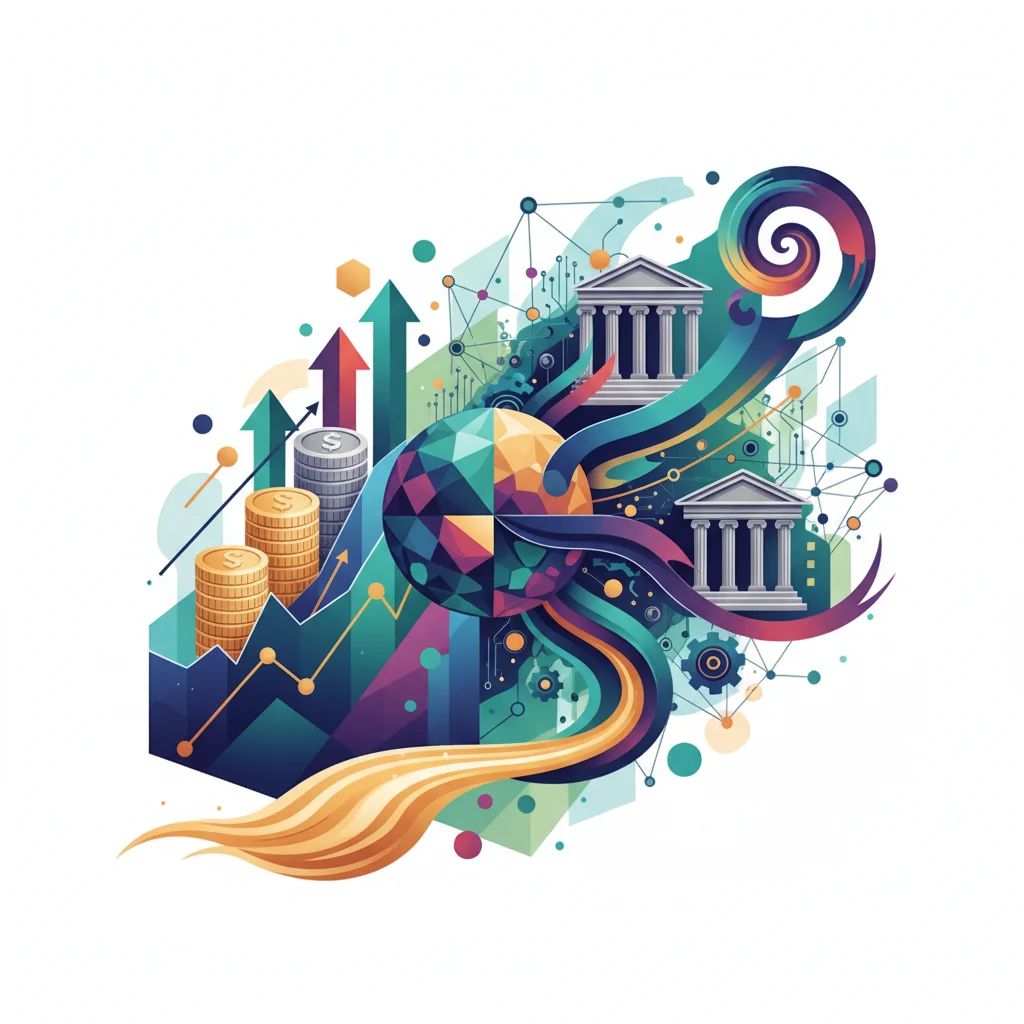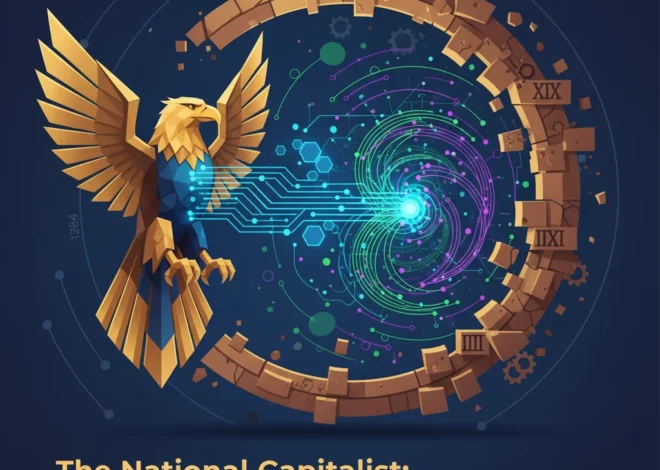
The Art of the Windfall: Deconstructing the Financial Strategy Behind Cultural Philanthropy
The Modern Medici: When a Cultural Windfall is More Than Just a Donation
In the world of high finance, a “windfall” is a term that quickens the pulse. It conjures images of unexpected stock market surges, lucrative IPOs, or savvy investments paying off spectacularly. It’s a language of profit, of capital, of economic gain. But what happens when this term is applied not to a corporation, but to a revered cultural institution? A recent letter in the Financial Times, titled “Courtauld cultural windfall,” hints at this fascinating intersection.
Authored by John Green, the Chairman of Catholics in Fundraising, the letter uses a significant financial event at London’s Courtauld Institute of Art as a lens to view the evolving landscape of giving. This isn’t just about a generous benefactor writing a check. It’s a story about sophisticated financial strategy, the changing nature of wealth, and the critical role that modern investing and financial technology play in preserving our shared cultural heritage.
This post will unpack the anatomy of a modern “cultural windfall.” We will explore how these events are engineered, the complex financial instruments that make them possible, and what they signal about the broader economy. From the boardroom of a non-profit to the blockchain, we’ll see how the art of fundraising is becoming as intricate and strategic as the art it seeks to protect.
Anatomy of a Windfall: Beyond the Generous Check
The Courtauld Institute of Art is more than a gallery; it’s a world-leading center for the study of art history and conservation. Like any major institution, its long-term survival depends not on ticket sales alone, but on a robust and forward-thinking financial foundation. A “windfall” in this context is rarely a simple lottery win. It is typically the result of one of three strategic financial pillars.
1. The Power of the Endowment
Most major cultural and educational institutions are supported by an endowment—a large investment fund designed to provide a stable, long-term source of income. The principal is invested, and the institution uses a portion of the investment returns for its operational costs. A “windfall” can occur when the endowment’s investment strategy significantly outperforms the market. This requires a sophisticated approach to the stock market, private equity, and alternative assets. The managers of these multi-billion dollar funds act much like high-level asset managers, navigating global economics to ensure growth. For example, a successful early investment in a disruptive tech company can lead to a massive influx of capital years later, funding exhibitions and research for a generation.
2. Catalytic Philanthropy from a New Generation of Donors
The second source is a major philanthropic gift, but the nature of these gifts is changing. The modern philanthropist, often from the world of finance or tech, approaches giving with an investor’s mindset. They aren’t just donating; they are investing in a mission. This can involve complex financial instruments like Donor-Advised Funds (DAFs), which have seen explosive growth. According to the National Philanthropic Trust, assets in DAFs in the US alone totaled $234.06 billion in 2021. These vehicles allow donors to make a charitable contribution, receive an immediate tax benefit, and then recommend grants from the fund over time. This sophisticated approach to giving requires close collaboration with banking and wealth management professionals.
3. Strategic Asset Monetization
Sometimes, a windfall can come from an institution’s own balance sheet. This might involve selling non-core real estate assets or, more controversially, deaccessioning works from their collection. While the latter is a fraught ethical issue, it highlights that these institutions are not just cultural hubs but also managers of incredibly valuable physical and financial assets. The decisions they make have profound implications for their financial stability and public mission.
The Modern Philanthropist’s Playbook: Data, Disruption, and Diversification
The perspective of the letter’s author, a leader in fundraising, is crucial. It signals a shift from traditional fundraising—galas, mail-in campaigns—to a model that mirrors modern corporate finance. Today’s donors want to see impact, efficiency, and a clear return on their “social investment.” This has led to the adoption of new strategies and technologies that are transforming the non-profit sector.
To illustrate this evolution, consider the differences between traditional and modern philanthropic approaches.
| Aspect | Traditional Philanthropy | Modern Philanthropy (Venture Philanthropy) |
|---|---|---|
| Motivation | Sense of duty, altruism, social status. | Solving systemic problems, measurable impact (ROI), market-based solutions. |
| Financial Vehicle | Direct cash donations, bequests in a will. | Donor-Advised Funds (DAFs), impact investing bonds, equity in social enterprises. |
| Engagement Level | Passive, hands-off. The check is written and the relationship often ends there. | Active and engaged. Donors may take a board seat or provide strategic expertise. |
| Risk Tolerance | Low. Prefers established, “safe” organizations. | High. Willing to fund innovative, unproven models with high potential for impact. |
| Key Metric | Amount of money raised or donated. | Lives changed, carbon emissions reduced, specific KPIs met. |
This shift means that fundraising leaders must now be fluent in the language of investing and financial planning. They must understand the motivations of a hedge fund manager or a tech founder who sees their philanthropic capital as another asset to be deployed strategically for maximum effect.
Fintech and the Democratization of Cultural Patronage
Perhaps the most radical change in the landscape of giving is the rise of fintech. Financial technology is not only reshaping banking and trading; it’s also revolutionizing how cultural institutions are funded. This technological wave is creating new avenues for support, moving beyond the ultra-wealthy to engage a much broader audience.
One of the most discussed (and debated) innovations is the role of blockchain. While the NFT art market has experienced volatility, the underlying technology offers intriguing possibilities for the cultural sector. For example, blockchain can provide an immutable and transparent ledger for donations, allowing donors to track exactly how their contributions are used. Museums could potentially issue “conservation NFTs” tied to the restoration of a specific masterpiece, allowing thousands of small donors to collectively fund a project and receive a unique digital collectible in return. This form of micro-patronage was unimaginable a decade ago.
Furthermore, fractional ownership platforms, powered by financial technology, could allow individuals to purchase a small, tokenized share in a piece of art. While the primary piece remains in the museum’s care, the capital raised from the sale of these shares could fund the institution’s operations. This model transforms a static cultural asset into a dynamic financial one, creating a new revenue stream. According to a report by Deloitte, the art-secured lending market is estimated at over $20 billion, indicating a massive appetite for financial products related to art.
The Macro View: Why Cultural Institutions are Economic Engines
A windfall at the Courtauld is not an isolated event; it has ripple effects throughout the wider economy. Cultural institutions are not just repositories of art; they are powerful economic engines. They create jobs—from curators and conservators to security guards and café workers. They drive tourism, anchor neighborhoods, and contribute significantly to the GDP. The arts and culture sector in the United States, for instance, was a $1.02 trillion industry in 2021, larger than construction or transportation.
Therefore, ensuring the financial health of these institutions is a matter of sound economics. When private philanthropy steps up with a major “windfall,” it often reduces the burden on public funding, which can be particularly volatile during economic downturns. This public-private partnership is essential for a thriving cultural ecosystem. The health of the stock market directly influences the value of endowments and the capacity of wealthy individuals to give, linking the fortunes of Wall Street to the galleries of our most treasured museums.
Conclusion: The Art of Financial Sustainability
The simple phrase “Courtauld cultural windfall” opens a window into the complex, high-stakes world of modern cultural finance. It reveals a landscape where philanthropy is no longer just about generosity but about strategic investment, where the tools of finance and the innovations of fintech are being harnessed to preserve priceless history.
For investors, finance professionals, and business leaders, this evolution offers a crucial insight: the principles that drive success in the corporate world—strategic planning, diversified revenue streams, technological adoption, and a focus on measurable impact—are now essential for the survival and flourishing of our most important cultural institutions. A windfall is not an end point; it is a catalyst. It is the fuel that, when managed with financial wisdom and a clear sense of purpose, can secure our cultural legacy for generations to come. The art of the future depends on mastering the art of finance today.


